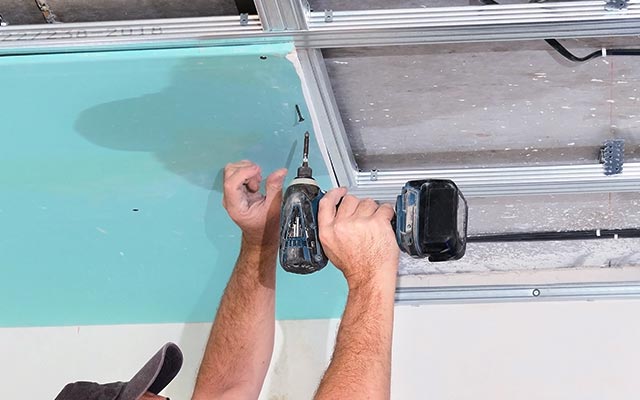What Makes Roofing Screws the Future of Metal Roofing Fastening?
2025-10-13
Roofing screws are specialized fasteners designed specifically for attaching roofing panels—especially metal, aluminum, or steel sheets—to structural supports such as purlins or rafters. Unlike ordinary screws, roofing screws typically feature a self-drilling tip or a sharp point, a sealing washer, and hardened steel construction to resist corrosion and maintain watertight integrity over time.
| Parameter | Typical Value / Range | Importance |
|---|---|---|
| Material / Coating | Hardened carbon steel with zinc + epoxy or stainless steel | Ensures corrosion resistance in outdoor exposure |
| Diameter & Length | 4.8 mm to 6.3 mm; lengths from 25 mm up to 150 mm+ | Tailors to different panel thicknesses and substrate depths |
| Head Type & Washer | Hexagonal or pan head with bonded EPDM (or neoprene) washer | Ensures sealing and torque control |
| Penetration / Drill Point | Self-drilling point able to pierce up to ~3 mm steel | Enables faster installation without pre-drilling |
| Load & Pullout Strength | ≥ 500 N tensile, shear-rated | Determines wind uplift resistance |
| Thermal Expansion Capability | Slotted washer or floating head designs | Allows expansion/contraction without loosening |
These numbers serve as reference baselines; real product lines may exceed them depending on the quality grade.
Why Should Roofing Screws Be the Preferred Choice?
Better Seal & Water Resistance
By integrating the sealing washer (commonly EPDM), roofing screws create a tighter junction between the panel and substrate, preventing water intrusion. Over decades, this seal can outperform nails or plain fasteners that rely on underlays or caulking.
High Uplift Resistance
Modern roofing screws, when properly installed into structural members, provide excellent wind uplift resistance. Especially in hurricane or typhoon zones, the rated pullout strength and shear capacity become critical.
Simplified & Faster Installation
Self-drilling screws eliminate the need for pilot holes, significantly speeding installation and reducing labor cost. This is especially valuable in large roof projects or retrofit applications.
Flexibility for Thermal Movement
Roofing systems expand and contract due to temperature changes. Many screw designs incorporate slotted washers, floating head geometry, or compliant washer compression features to maintain clamping force without stressing the panel.
Longevity under Harsh Conditions
Because roofing screws are often coated with multi-layer protective finishes (zinc, epoxy, PTFE, etc.), they resist corrosion from moisture, salt spray, or chemical exposure. Over the long term, that ensures fewer failures.
Adaptability to Varied Substrates
Roofing screws can attach to many substrates — steel, aluminum, wood, concrete (with special variants), and more — making them versatile across new build and renovation scenarios.
How to Choose, Specify, and Install Roofing Screws
How to Select the Correct Screw for the Job
a) Match screw length to the total thickness of roofing panel + substrate + penetration margin.
For example, if the panel plus liner is 1.2 mm, and the purlin thickness is 2.5 mm, a screw of ~40–45 mm may be chosen.
b) Choose corrosion rating appropriate for environment.
Salt coastal zones demand stainless or premium coated screws. Inland industrial areas may tolerate standard coatings.
c) Check the drill capacity against substrate gauge.
If the substrate is heavy gauge steel (say 3.0 mm), ensure the screw can drill it directly, or otherwise pre-drill.
d) Decide washer type and head style.
Some panels require low-profile heads to avoid interference; others may use large flange washers for thin panels.
e) Review documented load ratings.
Ensure screw manufacturer provides test data for shear, tensile and cyclic loading.
How to Install Screws Correctly
-
Use a torque-controlled driver — over-tightening can deform washers or strip threads; under-tightening can lose seal.
-
Maintain perpendicular alignment when driving screws to ensure proper seating.
-
Space screws according to wind/structural load specs (e.g., 300–500 mm spacing in many metal roof systems).
-
Use starter and closure screws at edges and ridges with appropriate lengths and washers.
-
Monitor driver bit wear; replace bits when necessary to avoid slippage that damages screw heads.
-
Periodically inspect and retighten if necessary (e.g. after seasonal expansion cycles).
How to Integrate Roofing Screws with System Design
-
In systems with insulation or vapor barrier layers, choose screws that penetrate through the thermal layers without compromising vapor seals.
-
In retrofit over old roof, confirm the existing substrate thickness and integrity to ensure screws anchor into structural members—not just old sheathing.
-
In hybrid systems combining metal and other materials, select compatible screw types for different zones (e.g. metal-to-metal and metal-to-wood zones).
How to Validate Screw Performance
-
Request third-party lab test reports (e.g. pullout, cyclical wind loading).
-
Validate compliance with building code or structural standards (e.g. ASTM, EN, local building codes).
-
Conduct mock-ups or sample roofs and subject to accelerated corrosion or weathering testing in representative environment.
What Future Trends Will Shape Roofing Screws?
Smart / Sensor-Integrated Fasteners
Fasteners with embedded micro-sensors or RFID may monitor torque, corrosion progression, or fatigue, enabling predictive maintenance of roofing systems.
Advanced Coatings & Nano-Protection
Expect development of ultra-durable nano-layer coatings with self-healing or anti-microbial properties to further extend life in corrosive environments.
Higher Strength Alloys & Composite Shanks
Using stronger alloys, composite reinforcement, or hybrid materials may let screws be smaller while maintaining load capacities—reducing panel stress and heads.
Modular & Universal Head Designs
Standardization toward heads and bits that fit multiple applications (metal panel, solar mounts, edge trim) may simplify tool inventories and reduce errors.
Integration with Solar or PV Attachment Systems
Roofing screws may evolve to do double duty as structural anchors for rooftop solar or PV racking, decreasing redundant penetrations.
Automation & Robotic Installation
Robotic tools may use optimized screw feed and automated alignment to speed roof builds—requiring screws compatible with automated systems.
Frequently Asked Questions about Roofing Screws
Q1: Can roofing screws be used on all roofing panel materials?
A1: Roofing screws are most commonly used on metal, aluminum, or steel panels. For materials like slate, ceramic, or heavily profiled membranes, special anchors or fasteners may be required. The key is matching the screw to the substrate and panel thickness.
Q2: What causes roofing screws to leak over time?
A2: Leakage can result from washer degradation (drying, hardening, tearing), over- or under-torque, misalignment of the screw, or corrosion of the screw body. Proper installation, periodic inspection, and use of high-quality washers and coatings mitigate these risks.
Roofing screws offer a superior fastening solution compared to traditional methods due to their sealing capability, high uplift resistance, thermal flexibility, and installation speed. By carefully selecting based on load ratings, environmental conditions, substrate compatibility, and correct installation practices, system integrity can be assured for decades to come. Emerging trends such as sensor integration, advanced coatings, stronger materials, and automation promise further innovation in this field.
Among leading manufacturers, Jiaxing Runyee has committed to advancing roofing screw technology through rigorous R&D, quality control, and custom solutions tailored to varied climates and roofing systems. For those interested in engineering-level support, product samples, or system integration guidance, contact us to explore how Runyee’s solutions meet your project’s demands.




























